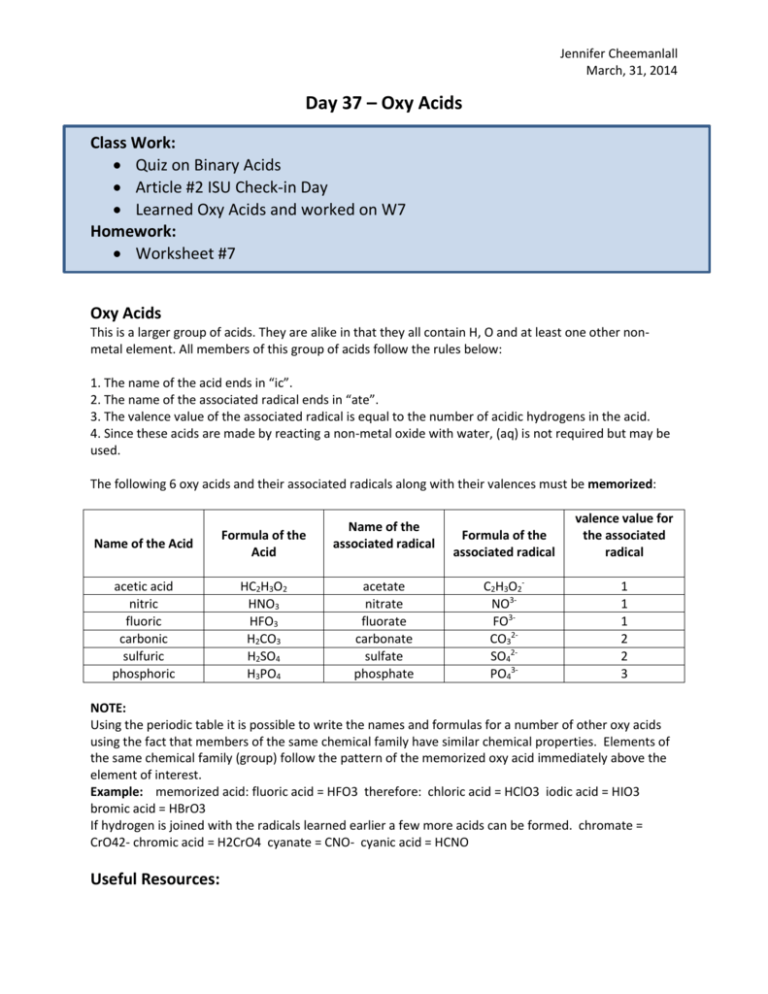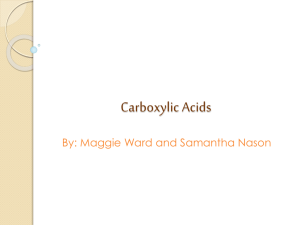Oxy Acids - drbperiodbsem2
advertisement

Jennifer Cheemanlall March, 31, 2014 Day 37 – Oxy Acids Class Work: Quiz on Binary Acids Article #2 ISU Check-in Day Learned Oxy Acids and worked on W7 Homework: Worksheet #7 Oxy Acids This is a larger group of acids. They are alike in that they all contain H, O and at least one other nonmetal element. All members of this group of acids follow the rules below: 1. The name of the acid ends in “ic”. 2. The name of the associated radical ends in “ate”. 3. The valence value of the associated radical is equal to the number of acidic hydrogens in the acid. 4. Since these acids are made by reacting a non-metal oxide with water, (aq) is not required but may be used. The following 6 oxy acids and their associated radicals along with their valences must be memorized: Name of the Acid Formula of the Acid acetic acid nitric fluoric carbonic sulfuric phosphoric HC2H3O2 HNO3 HFO3 H2CO3 H2SO4 H3PO4 Name of the associated radical acetate nitrate fluorate carbonate sulfate phosphate Formula of the associated radical valence value for the associated radical C2H3O2NO3FO3CO32SO42PO43- 1 1 1 2 2 3 NOTE: Using the periodic table it is possible to write the names and formulas for a number of other oxy acids using the fact that members of the same chemical family have similar chemical properties. Elements of the same chemical family (group) follow the pattern of the memorized oxy acid immediately above the element of interest. Example: memorized acid: fluoric acid = HFO3 therefore: chloric acid = HClO3 iodic acid = HIO3 bromic acid = HBrO3 If hydrogen is joined with the radicals learned earlier a few more acids can be formed. chromate = CrO42- chromic acid = H2CrO4 cyanate = CNO- cyanic acid = HCNO Useful Resources: Jennifer Cheemanlall March, 31, 2014 Textbook: pg. 466-467, 666-667 http://www.preparatorychemistry.com/bishop_oxyacid_nomenclature.htm https://www.youtube.com/watch?v=VgVo-anMzfA http://www2.pvc.maricopa.edu/tutor/chem/chem130/nomenclature/acidrules.html






